During this final Saturday of Women's History Month, we take a look at journalist and author Rebecca Harding Davis, whose work I have discussed at length in my book Literature and Journalism in Antebellum America, as well as articles in Journalism History and Southern Cultures. If you find the concept of "investigative fiction" intriguing, I invite you to join historian Christopher Young and me for an in-person walking tour, "Welcome to the Jungle: Upton Sinclair's Investigative Fiction," in Chicago on June 7, 2025. Visit mindinclined.org for more information.
How can books change us?
Let me count the ways.
If you have been reading this newsletter since its launch last year, you may remember some of the ways I already have addressed. Reading about the feelings and experiences of others, for example, provides opportunities for empathy, which itself is transformative. Reading also can lead to the moving experience of wonder. In some cases, however, the subject matter and the impact are more concrete.
Such is the case for some of the work of a largely forgotten writer named Rebecca Harding Davis, a prolific writer of fiction and nonfiction in the nineteenth and early twentieth centuries. Born in 1831 in Washington, Pennsylvania, she later lived in Alabama and Virginia. Like other writers of her era — Walt Whitman and Stephen Crane among them — Davis was both a journalist and a creative author. It should come as no surprise then that her first major work of literature was an example of what I call "investigative fiction."
In my book Literature and Journalism in Antebellum America, I have written about a variety of ways that a kind of "sibling rivalry" developed among creative authors and journalists in the decades before the Civil War. With the advent of the so-called "penny press," which made newspapers affordable to the masses, came a newspaper sensation — in more ways than one. For one thing, newspapers were wildly popular. Think TikTok and Instagram, but without the viral cat videos. One observer, Alexander Mackay, wrote:
In connection with American newspapers, the first thing that strikes the stranger is their extraordinary number. They meet him at every turn in all sizes, shapes, characters, prices, and appellations. On board the steamer and on the rail, in the countinghouse and hotel, in the street and the private dwelling, in the crowded thoroughfare and in the remotest rural district, he is ever sure of finding a newspaper.
The "news" itself — well, technically, some of it probably didn't even count as news because it wasn't even true — was often also sensational — crime, sex, scandal, extraterrestrials: check, check, check, and check. (Think nineteenth-century Americans were prudes? Think again.)
Some of America's literary writers looked at this new kid on the block — they couldn't miss it, after all — and recoiled. Henry David Thoreau wrote of one newspaper, the Boston Herald:
When I have taken up this paper with my cuffs turned up, I have heard the gurgling of the sewer through every column. I have felt that I was handling a paper picked out of the public gutters, a leaf from the gospel of the gambling-house, the groggery and the brothel, harmonizing with the gospel of the Merchants' Exchange.
Some of these writers, including Emily Dickinson and Harriet Beecher Stowe, even responded with some "News of Their Own": fiction, nonfiction, even poetry that "reported" on nature, offered up news of the possible, or exposed hidden truths through "investigative fiction."
Davis produced a striking example of this last form of truth-telling with her story "Life in the Iron-Mills," published in 1861. Early in the story, Davis issues a kind of invitation to her readers, framing her fictional story as a kind of exposé:
This is what I want you to do. I want you to hide your disgust, take no heed to your clean clothes, and come right down with me,—here, into the thickest of the fog and mud and foul effluvia. I want you to hear this story. There is a secret down here, in this nightmare fog, that has lain dumb for centuries: I want to make it a real thing to you.
Through fiction, Davis clearly seeks to expose the experience lived by many Americans who worked in these mills. Consider this passage about a character named Hugh Wolfe:
I want you to come down and look at this Wolfe, standing there among the lowest of his kind, and see him just as he is, that you may judge him justly when you hear the story of this night. I want you to look back, as he does every day, at his birth in vice, his starved infancy; to remember the heavy years he has groped through as boy and man,—the slow, heavy years of constant, hot work.
Before writing this story, Davis had been a journalist, writing for the Wheeling Intelligencer. Why did she feel compelled to write her exposé in the form of fiction? Like some of her fellow writers, Davis apparently thought that journalism, at least as it was then practiced, was too limited in its scope. Indeed, the story features a reporter who misses the deeper story, focusing instead on surface matters such as the "hands employed" and "sinking-fund." Elsewhere, Davis refers to a newspaper court report, which tells only a fraction of the whole story: "Circuit Court. Judge Day. Hugh Wolfe, operative in Kirby & John's Loudon Mills. Charge, grand larceny. Sentence, nineteen years hard labor in penitentiary."
"Life in the Iron-Mills" is not the only work of investigative fiction Davis wrote. Many years later she came out with Put Out of the Way, an exposé of mental health institutionalization, and John Andross, which "covered" the Tweed Ring.
These works by Davis, like similar works by Stowe and others, show that even fiction, which by definition is not entirely factually accurate, can be a vehicle for telling a deeper truth.






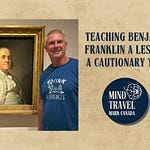


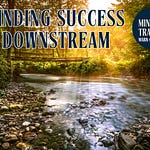
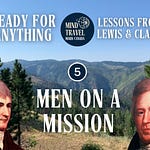
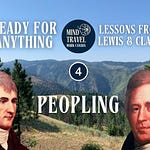
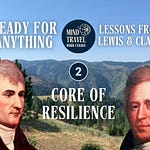
Share this post